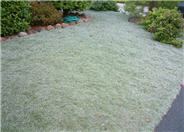
Common name:Dymondia, Rock Ditty
Botanical name:Dymondia margaretae
This foliage is gray/green/silvery; it is a very dense, mat forming ground cover. It tolerates drought, cold, salt spray and poor soils. It's deep rooted and produces small, inconspicuous yellow flowers. Rock Ditty is great for use in between stepping stones or pavers.
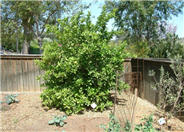
Common name:Eureka Lemon
Botanical name:Citrus limon cv.
This tree produces bright yellow lemons that have an exceptionally 'bitter' taste. The lemons have a high juice and acid content and are nearly seedless.
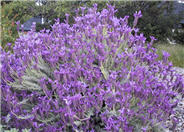
Common name:Spanish Lavender
Botanical name:Lavandula stoechas
This dense shrub grows 2'-3' tall with blue gray foliage and deep purple flowers that have large showy bracts near the top of the spikes. It is drought tolerant .
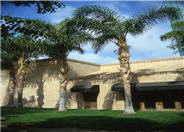
Common name:Queen Palm
Botanical name:Syagrus romanzoffianum
This palm has a very straight trunk to about 50' in height. It has arching, feathery, bright green, glossy leaves that can be 10'-15' long. It is fragile in heavy winds and a fast grower. It will become damaged in temperature below 24 degrees F.
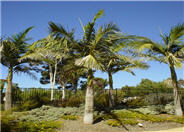
Common name:King Palm
Botanical name:Archontophoenix cunninghamiana
This is a beautiful palm which grows 40' or higher with a 10'-15' spread. The feathery leaves can grow 10' in length and are green above and gray beneath. It tolerates shade and can grow beneath tall trees for a long time if needed. It 's unique because it can be used as an indoor plant and will tolerate temperatures down to 28 degrees F.
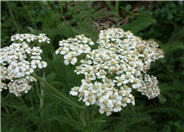
Common name:Yarrow
Botanical name:Achillea millefolium
This Achillea features spreading mats of fern-like rosettes, along with deeply divided leaves of a green or gray green color. In this form, the flowers are usually a white tone. Stems can reach 2'-3' above foliage. Yarrows propagate easily from rooted cuttings or division, which should be performed in the early spring or fall. Following bloom, one should dead head the plant and divide the clumps when it appears crowded.
| Designer: Carol Couco | Carol's Patio |
Photographer: GardenSoft |
Soils and Compost:
Physical weed control, including mulching, or hand removal protects the watershed from harmful chemicals.
Water Saving Tip:
Lawn watering more than 5 minutes usually results in runoff. Use multiple cycle starts.
Integrated Pest Management:
Attract, or buy beneficial insects such as ladybugs and lacewings to control pest outbreaks in your garden.
